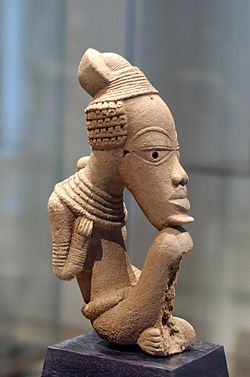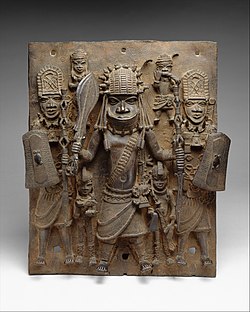

Most African sculpture from regions south of the Sahara was historically made of wood and other organic materials that have not survived from earlier than a few centuries ago, while older pottery figures are found from a number of areas. Masks have been important elements in the cultural traditions of many peoples, along with human figures, often highly stylized. There is a vast variety of styles, often varying within the same context of origin and depending on the use of the object. Wider regional trends are apparent, and sculpture is most common among "groups of settled cultivators in the areas drained by the Niger and Congo rivers" in West Africa. [1]
Contents
Direct images of African deities are relatively infrequent, but masks in particular are or were often made for traditional African religious ceremonies. Since the latter half of the 20th century, there are also several styles of modern African sculpture, while many sculptures are made for tourists. [2] African masks were an influence on European Modernist art, which was inspired by their lack of concern for naturalistic depiction.





























